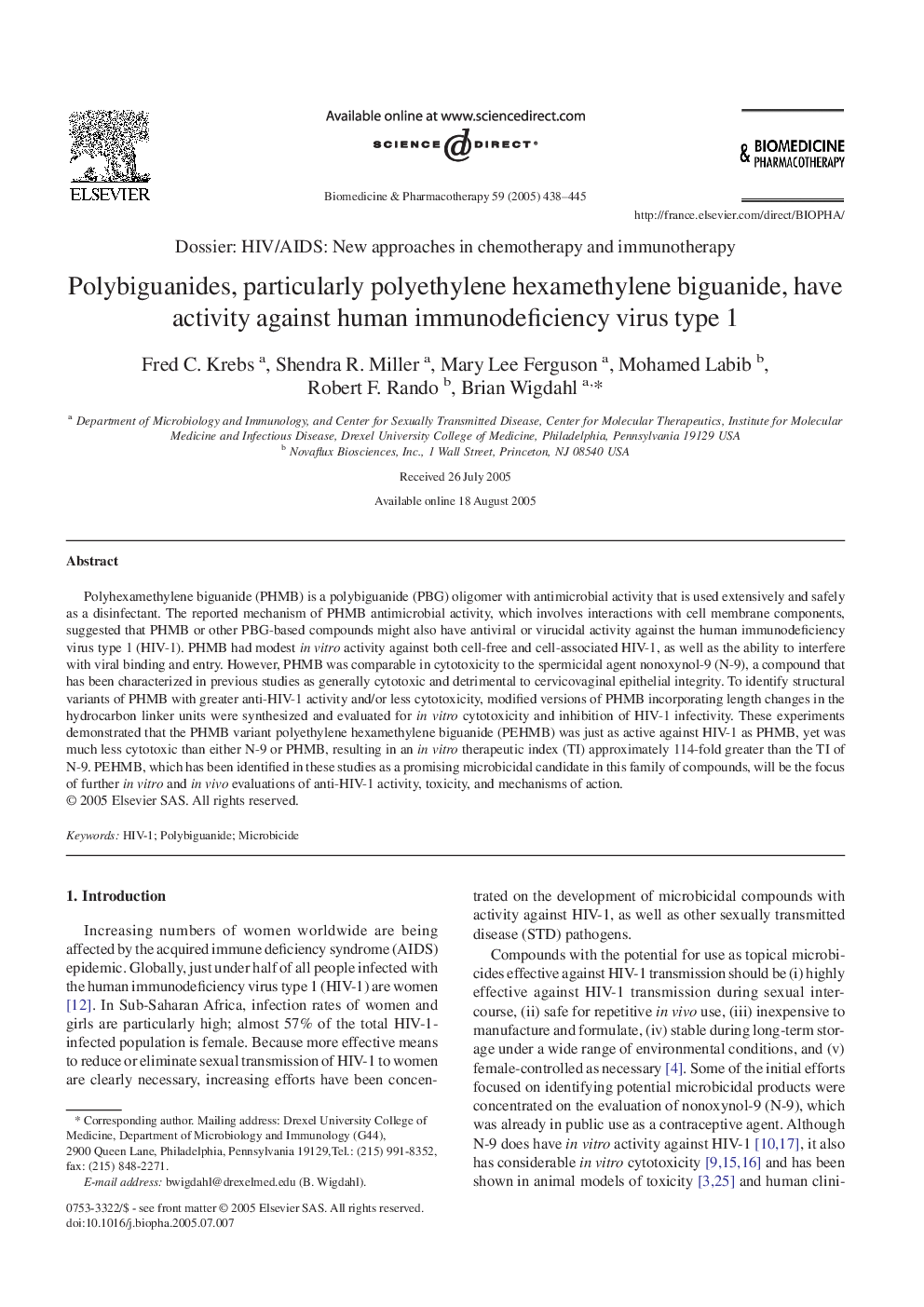| Article ID | Journal | Published Year | Pages | File Type |
|---|---|---|---|---|
| 9004440 | Biomedicine & Pharmacotherapy | 2005 | 8 Pages |
Abstract
Polyhexamethylene biguanide (PHMB) is a polybiguanide (PBG) oligomer with antimicrobial activity that is used extensively and safely as a disinfectant. The reported mechanism of PHMB antimicrobial activity, which involves interactions with cell membrane components, suggested that PHMB or other PBG-based compounds might also have antiviral or virucidal activity against the human immunodeficiency virus type 1 (HIV-1). PHMB had modest in vitro activity against both cell-free and cell-associated HIV-1, as well as the ability to interfere with viral binding and entry. However, PHMB was comparable in cytotoxicity to the spermicidal agent nonoxynol-9 (N-9), a compound that has been characterized in previous studies as generally cytotoxic and detrimental to cervicovaginal epithelial integrity. To identify structural variants of PHMB with greater anti-HIV-1 activity and/or less cytotoxicity, modified versions of PHMB incorporating length changes in the hydrocarbon linker units were synthesized and evaluated for in vitro cytotoxicity and inhibition of HIV-1 infectivity. These experiments demonstrated that the PHMB variant polyethylene hexamethylene biguanide (PEHMB) was just as active against HIV-1 as PHMB, yet was much less cytotoxic than either N-9 or PHMB, resulting in an in vitro therapeutic index (TI) approximately 114-fold greater than the TI of N-9. PEHMB, which has been identified in these studies as a promising microbicidal candidate in this family of compounds, will be the focus of further in vitro and in vivo evaluations of anti-HIV-1 activity, toxicity, and mechanisms of action.
Keywords
Related Topics
Health Sciences
Medicine and Dentistry
Oncology
Authors
Fred C. Krebs, Shendra R. Miller, Mary Lee Ferguson, Mohamed Labib, Robert F. Rando, Brian Wigdahl,
